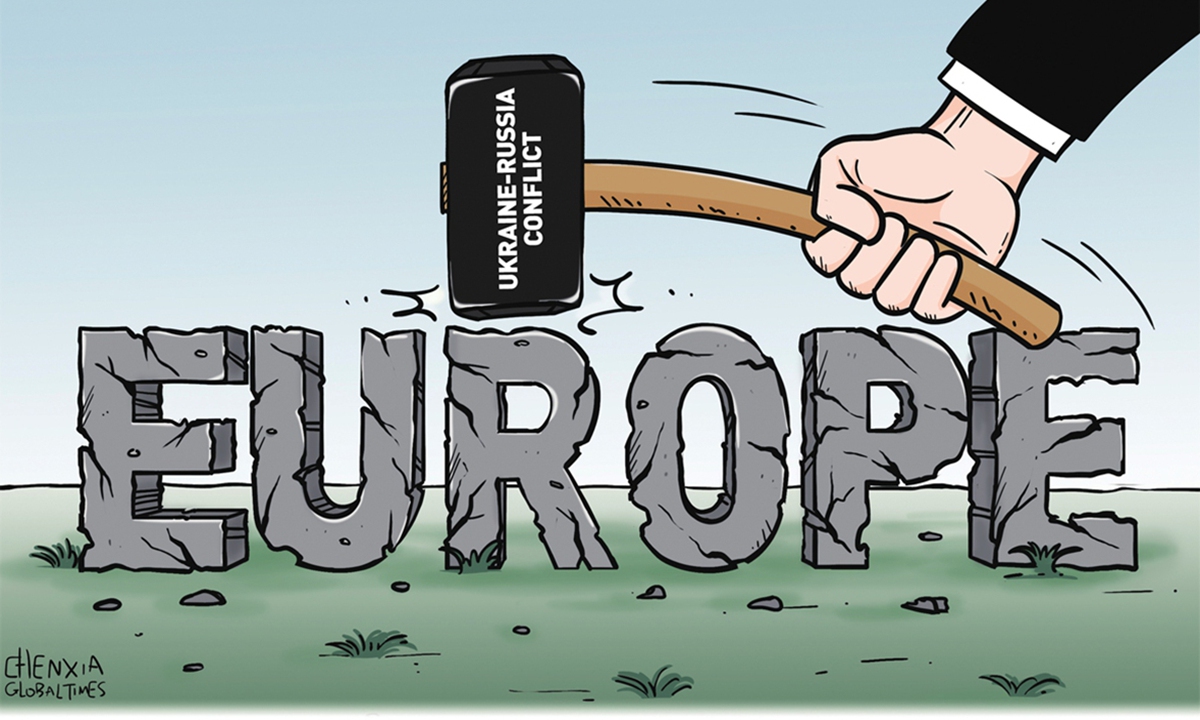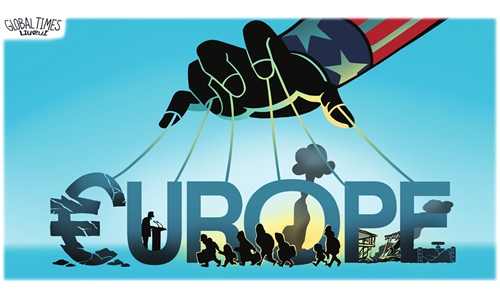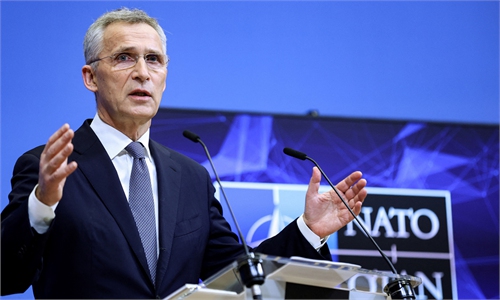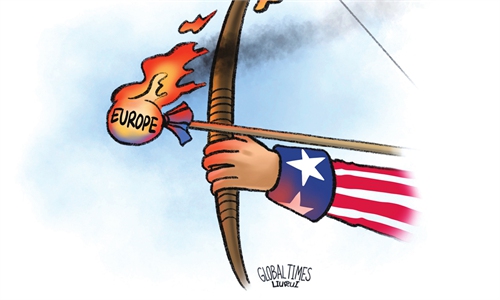A sustainable regional security architecture is the only way to solve the European security dilemma

Illustration: Chen Xian/Global Times
There are still no indications that the Russia-Ukraine conflict, which has lasted for nearly a year, is about to cease or ease. Despite various appeals from the outside world, at present, the two sides lack the necessary conditions to resume substantive peace talks. Furthermore, the essence of the ongoing conflict is the crisis of the European security architecture. No matter how the conflict develops or when the negotiation resumes, in addition to urging the Moscow and Kiev to remain restraint and avoid further escalation, it is also necessary to explore the manner of coexistence in the future, and cogitate a new European security architecture.First, any new European security architecture cannot exclude Russia. The Ukraine crisis has significantly exacerbated the irreconcilability between Russia and the West in terms of strategic orientation, ideology, and development models. The fact - Russia geographically belongs to Europe - is unable help it become a part of Europe in politics. Yet, security issues differ from abstract political identity, as they are highly realistic and may result in irreversible consequences.
Looking back at history, the European continent has been devastated by war. Ultimately, the symbiotic and interconnected nature of security issues determines that only when the legitimate concerns of stakeholders are responded to, can peace be realized. Thus, excluding Russia, an unmovable neighbor, or blindly intensifying containment and confrontation under the rhetoric of "Russian threat," is an "ostrich effect" that covers up the root of contradictions, which makes it difficult to resolve the crux of security dilemma.
Furthermore, the new European security architecture must abandon the notion of exclusivity. Throughout the important documents that constitute the post-war European security architecture, the principle of "indivisible security" runs through it. Russia once hoped to strengthen the leading position of the Organization for Security and Cooperation in Europe. However, out of the need to maintain the rationality of its own existence, NATO has continuously strengthened its awareness of exclusive security, which has led to the constant erosion of the strategic comfort level between itself and Russia.
Putting aside subjective political or military decisions, differences in cognition of the principle of "indivisible security" and the failure to integrate Russia into the European security architecture on an equal footing are the causes of this round of the Ukraine crisis, and the parties have fallen into the interactive trap of maintaining security through confrontation. Hence, it is necessary to redefine the principle of "indivisible security," abandon the system design based on the position of power, increase the cost of resolving security claims by force, and achieve the relative balance of the security architecture in an inclusive and cooperative manner to avoid wider conflicts caused by exclusivity of security.
Moreover, a new European security architecture cannot be achieved without cognitive reshaping. Russia believes that it should be allowed to participate in the regional and global security architecture as an equal. However, the US and Europe insist on the cognitive logic of the "winning side" versus the "losing side" of the Cold War and prioritize the weakening and containment of Russia as the direction of institution-building.
Be it the binary narrative of "democracy VS authoritarianism," or the theory of institutional superiority, or the "Missionary Spirit," none will help resolve cognitive bias between Europe and Russia. Only by discarding the simple "friend or foe" thinking based on new geopolitical realities, comprehensively adjusting mutual cognition on each other, and showing mutual respect for core interests and concerns, can it be possible to build effective European security architecture.
Finally, the new European security architecture requires a long-term vision. Europe is still in the phase of "traumatic stress response" brought about by the Ukraine crisis. With Finland and Sweden starting the process of joining NATO, NATO's "northern expansion" will constitute the offensive and defensive frontier against Russia from the Black Sea, the Baltic Sea to the Arctic Ocean. In response, Russia has accelerated the military integration of the Union State, or Union State of Russia and Belarus. With the Ukraine crisis expanding and becoming protracted and complicated, the fight in the battlefield has intensified and there has been zero mutual trust between NATO and Russia.
But in the long run, a sustainable regional security architecture is the only way to solve the European security dilemma, and the key lies in the mutual trust building measures. It is necessary to orderly rebuild multi-level security mutual trust measures and dialogue mechanisms, enhance the transparency of security policies between Europe and Russia, maintain the predictability and standardization of competition, and prevent strategic misjudgments causing the crisis to spiral out of control or sparking new conflicts. Only by reaching a consensus on a new European security architecture can it be possible to break through the security dilemma caused by the Ukraine crisis.
The author is a research fellow of the Shanghai Institutes for International Studies. opinion@globaltimes.com.cn



